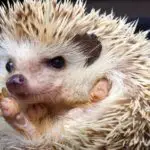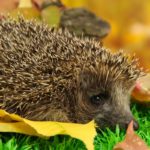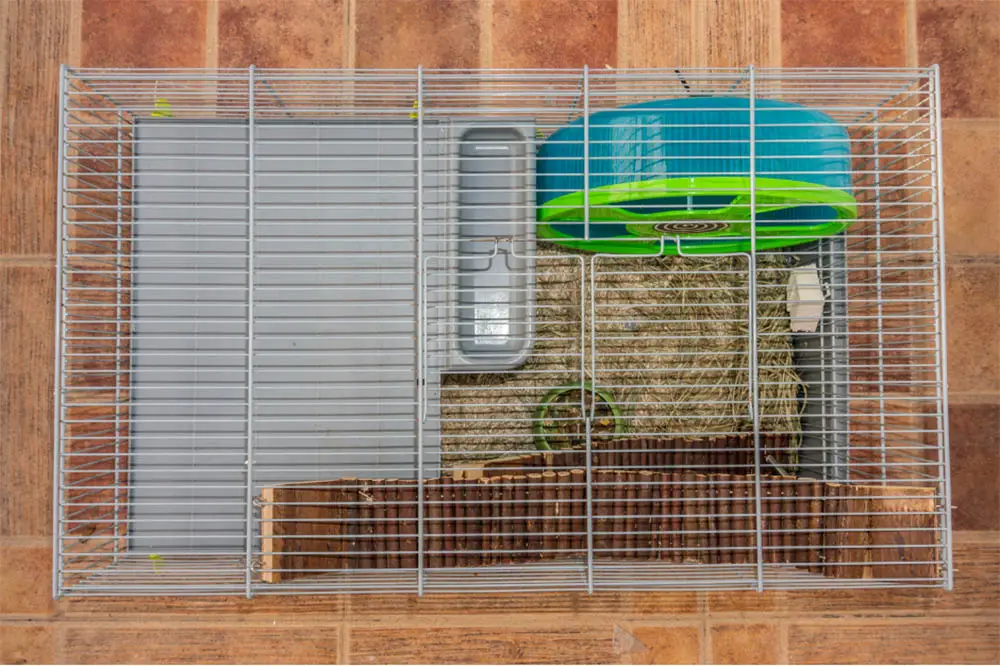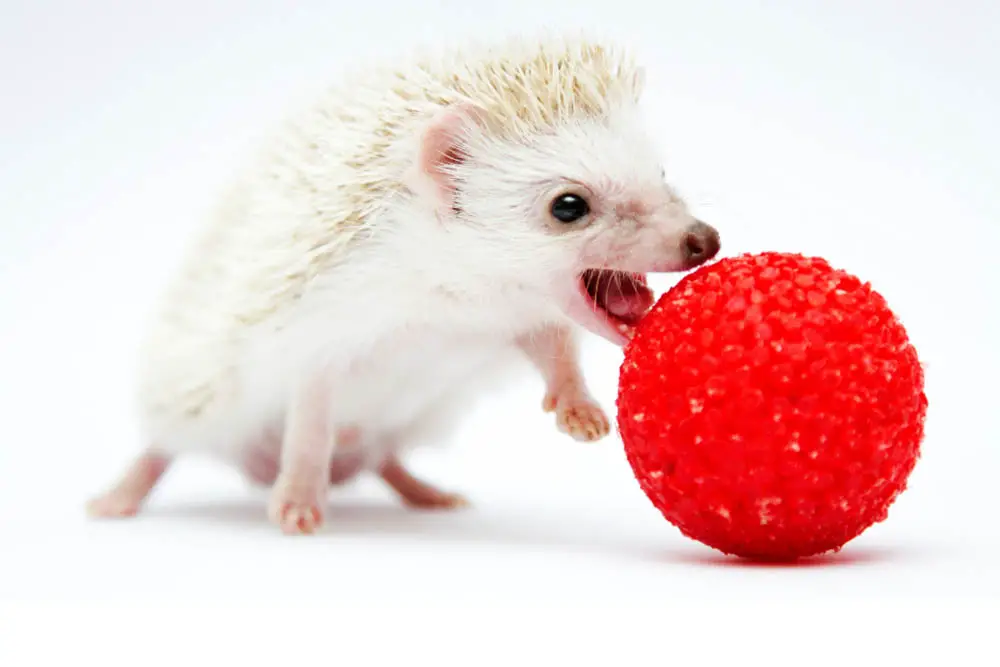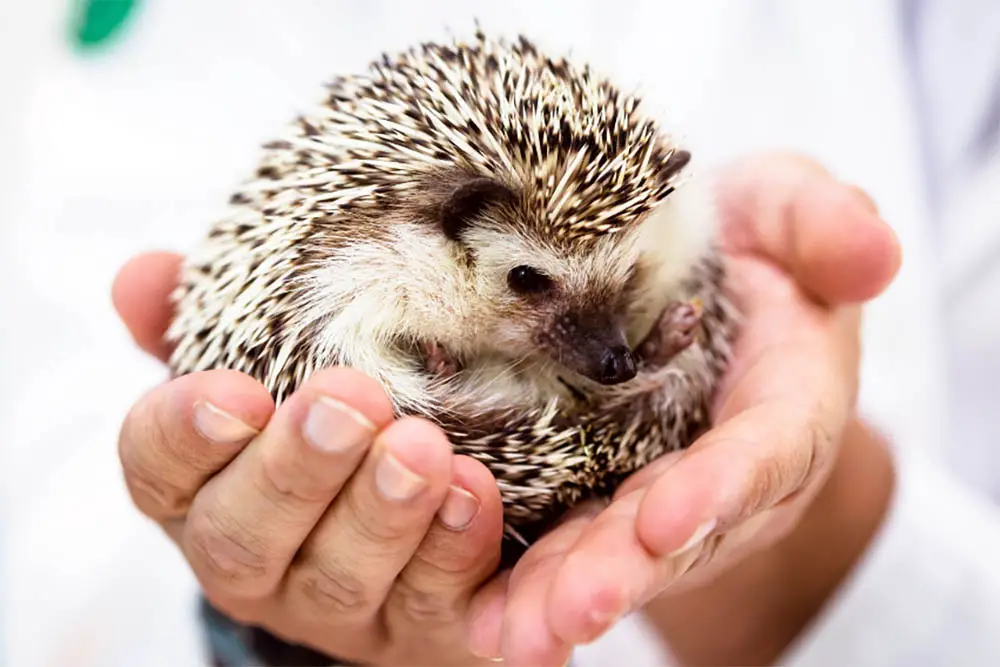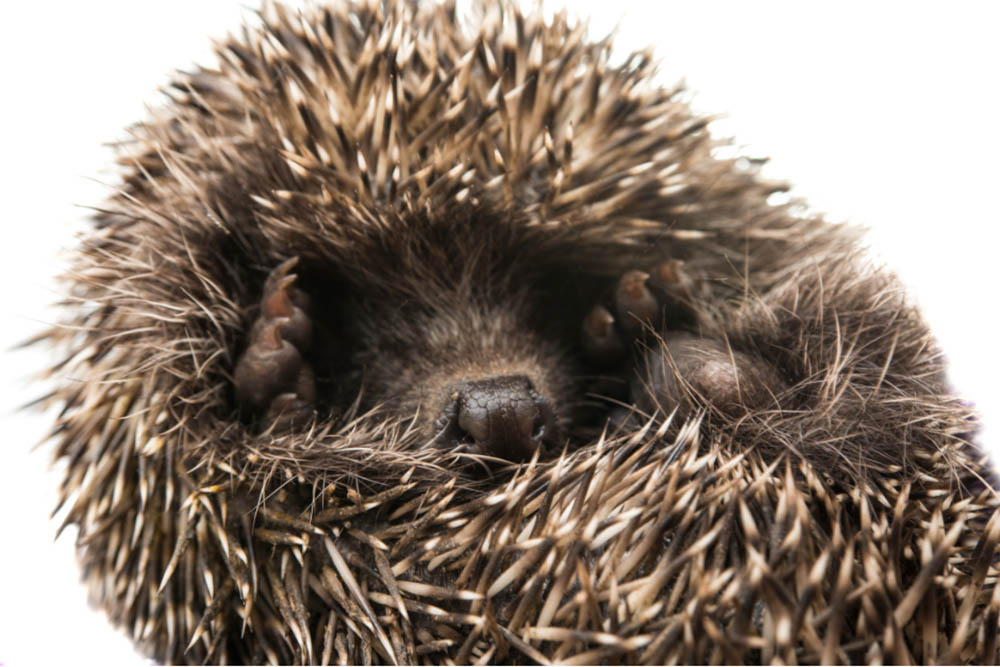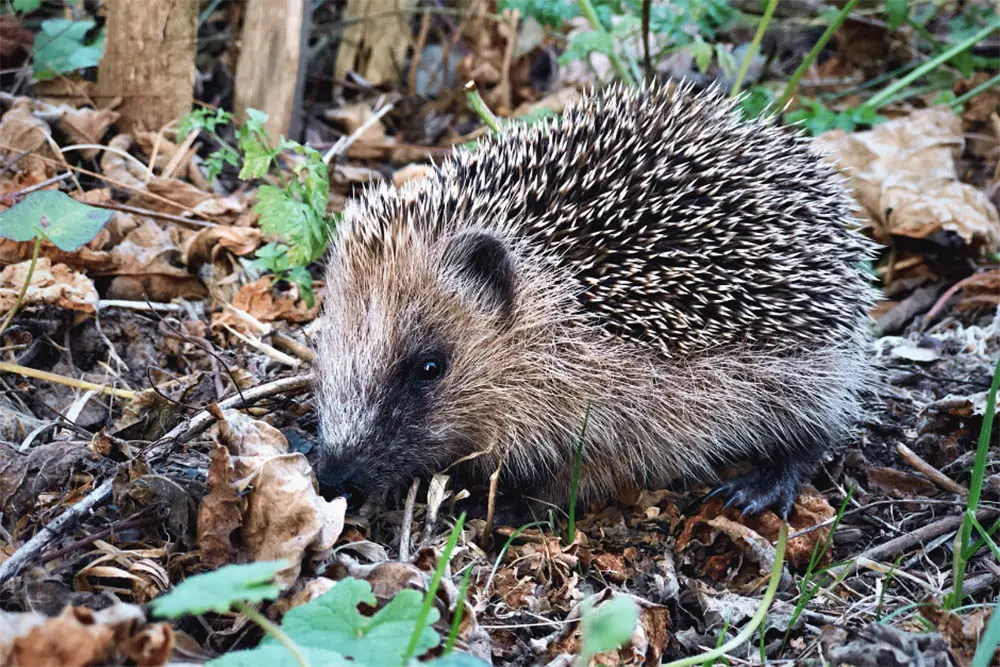It’s not often that the addition of painful pricks makes something cuter, but that’s certainly true for the hedgehog. Somehow, that back full of terrible spikes only adds to the attraction.
The quills are what makes a hedgehog the loveable hedgerow creature it is.

When we think of a hedgehog, the quills are probably one of the first things to come to mind. While they may be iconic, not much of us know anything about them aside from the obvious – don’t touch!
In this guide, we explore everything you may want to know about this cute little creature’s most dangerous weapon. If you want to own a hedgehog, or you come across one in the wild, it’s important to be aware of how to treat the quills correctly.
What are hedgehog quills?
While they may look like they’re covered in pins, the hedgehog quill is made of a decidedly more common material. The quills are essentially stiff keratin, which is the same substance that makes up human hair and fingernails.
Every quill is made up of a hollow keratin tube, covering the hedgehog all over its back. They’re mostly white, but banded with areas of dark brown. The quills are attached to the body via two large muscles, which allow the hedgehog to bristle when threatened.
When the hedgehog senses danger, it curls into a ball and raises its quills.
Although they’re commonly known as quills, technically hedgehogs have spines. Both terms refer to a type of hardened hair, but quills have a spongy inside compared to the hollow spines. So, all quills are spines, but not all spines are quills.
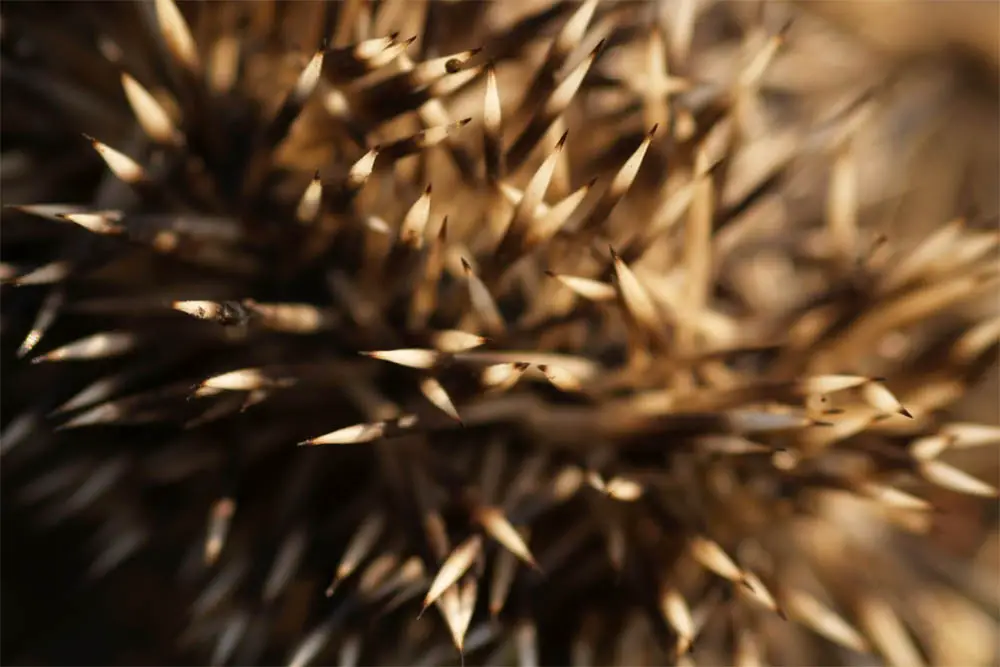
Hedgehogs are covered in roughly 5000 spines, and some have as many as 7000. They’re found all over the back of the hedgehog, with only a few areas left unprotected.
The face, feet, and belly are the only areas of the little hedgehog not covered by quills (although the hair found here is still quite coarse).
While you might think this sounds like a very painful birthing process for the mother hedgehog, each quill is actually covered at birth. The spikes are still there, they’re just blanketed with a protective layer of membrane, Over time, this membrane dries up and shrinks.
Then it’s either cleaned off or falls away, and the spines come through. These early quills are milky white, and will eventually fall out.
What do hedgehogs use their quills for?
The primary use of the quills is for protection. When a hedgehog feels threatened, it curls up into the classic ball shape. It can do this because of the large muscles in its back, which form a tight ball and pull up the spines.
Each spine raises to form a crisscross pattern, meaning no area of the hedgehog goes unprotected. Tucked away inside, the soft uncovered face and belly have almost a layer of armor.
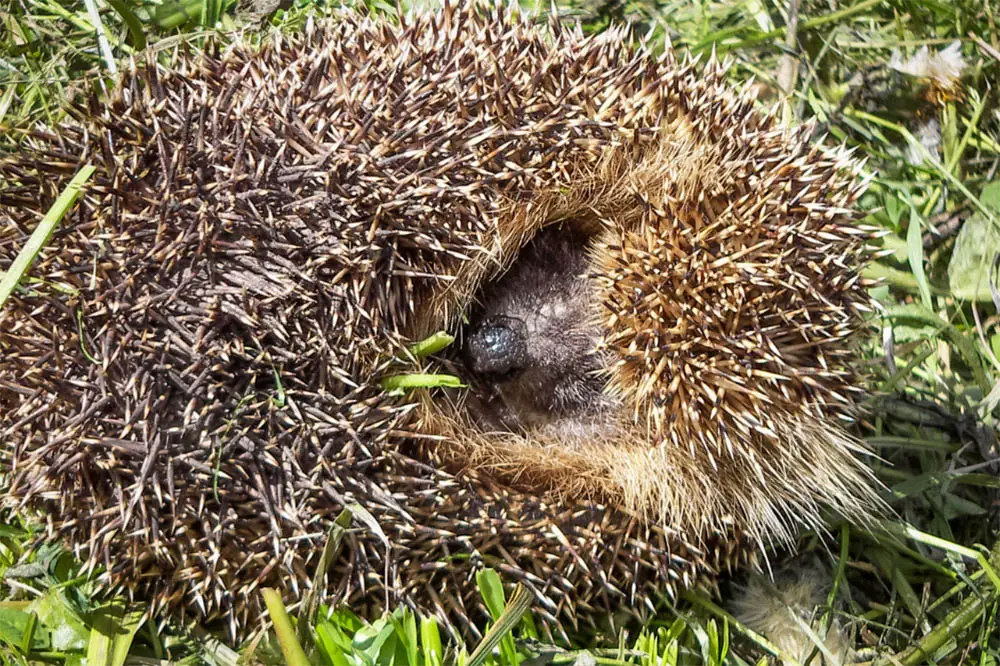
When a predator comes along, they give the hedgehog a miss or risk a face full of spikes. The hedgehog creates such a tight ball that it’s difficult for the predator to pull them apart.
Without these spines, the small and delicate hedgehog would be vulnerable to attack.
Hedgehogs also use their spines to do something called anointing. This odd ritual is when a hedgehog starts to froth at the mouth, and then rubs this spit into their spines.
There is still some confusion around anointing, although most agree it’s done as a reaction to new stimuli. When a hedgehog smells something new, it may chew on this substance, and then cover their spines with the saliva.
This can potentially camouflage their own scent, and help them adjust to a new environment. It’s also thought that in some situations this can poison the quills, to deter predators that aren’t put off by spikes.
Do hedgehogs lose their quills?
Hedgehogs do lose their quills throughout their life. It can be upsetting for a new owner to see their hedgehog shed their quills, but it’s perfectly normal behavior.
As well as regular shedding, hedgehogs go through periods where they lose large amounts of quills over a short period of time. Remember that these spines are surprisingly similar to hair: no one’s surprised when a dog sheds its hair.
The first time hedgehogs lose their spines is at around 6 weeks old. This process is commonly referred to as quilling.

The spines of a baby hedgehog are too small to protect the adult body, so they need to be shed and replaced with better ones.
A baby hedgehog may find this quite uncomfortable, as these new quills are significantly larger, but need to get through the small holes left by the baby quill. These new quills will look significantly different, and it may be a surprise to see.
The second major quilling happens a few weeks on from this. When the hedgehog is roughly 4 months old, they will once again shed and replace the quills. This is a less painful process, but it still isn’t particularly enjoyable.
While these are the two major times it happens, hedgehogs will continue to lose and replace quills throughout their lives. They may even have a larger seasonal shed.
Are hedgehog quills dangerous?
They may look scary, but the spikes on the back of a hedgehog actually aren’t that dangerous. If you touch them, even when they’re bristled, it’s unlikely to be particularly painful. However, you shouldn’t touch a hedgehog that doesn’t want to be touched.
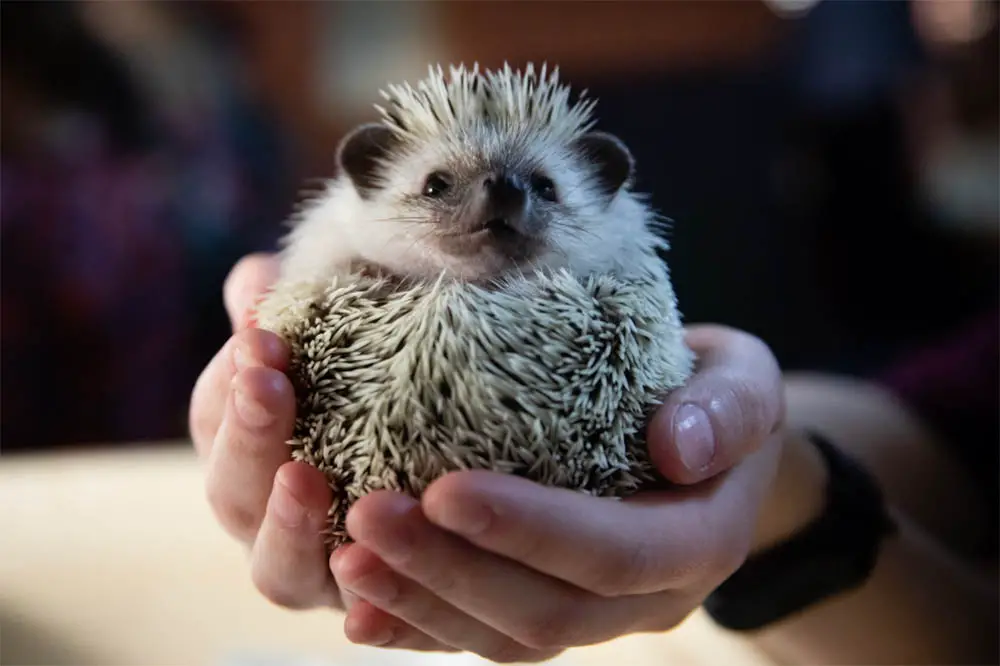
Hedgehogs also can’t shoot their quills. Unlike the porcupine, the only way a hedgehog loses its quills is via shedding. So you can stand right behind a hedgehog and not worry about a face full of quills.
Hedgehog quills aren’t poisonous, nor are they barbed. It’s important to be aware that the spines can carry bacteria and parasites, so you must be careful around them, particularly in the wild.
Hedgehogs wouldn’t be hedgehogs without their quills! They may be the defining feature, but it’s always best to exercise caution.

